Charles Dowding has designed some lovely module trays for starting off his seedlings. I’d use them in a heartbeat. Unfortunately in the volume I’d use them, I really can’t justify the cost.
I particularly like the fact that they have a hole in the bottom of each cell that, for example, a finger can be poked through to release the plant from the cell. So, I decided I’d have a go at making my own.
I started off buying a stack of fifty trays like these. From memory they cost less than £15 delivered (I don’t get out lots).
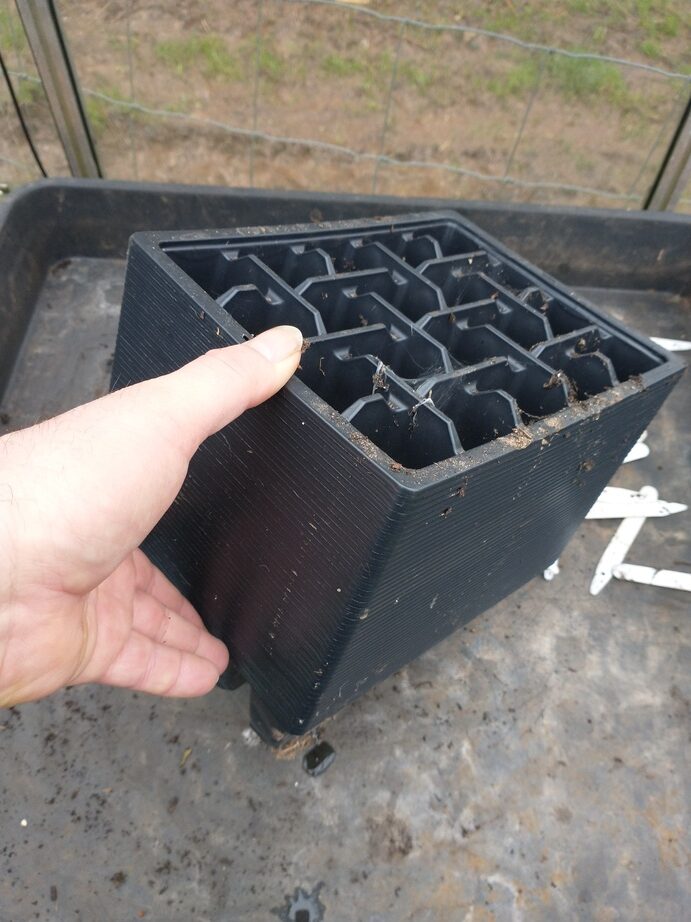
I then found an offcut of ¾” conduit and ground one end into a cutting edge.
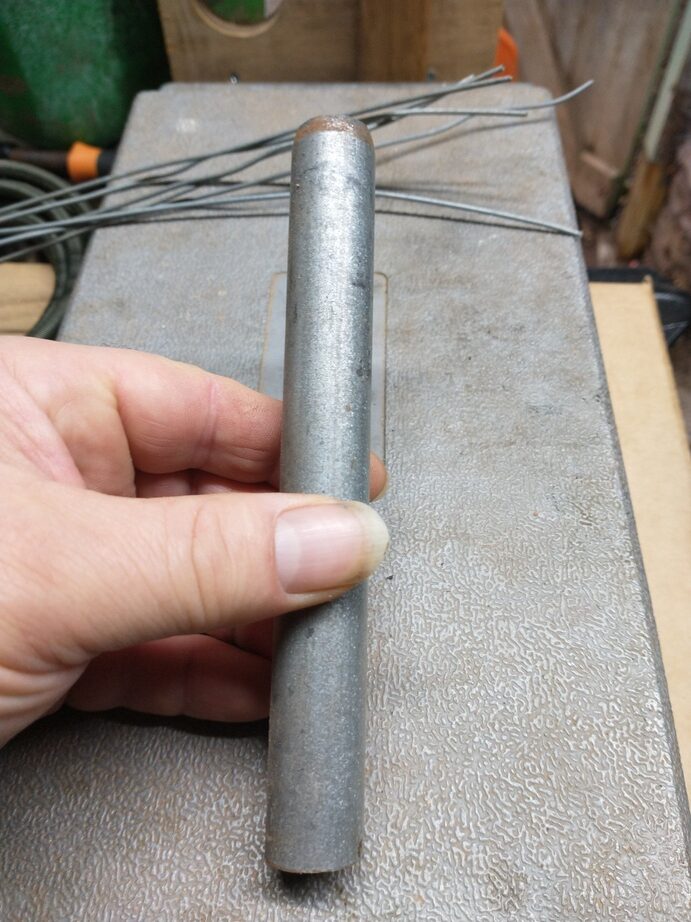
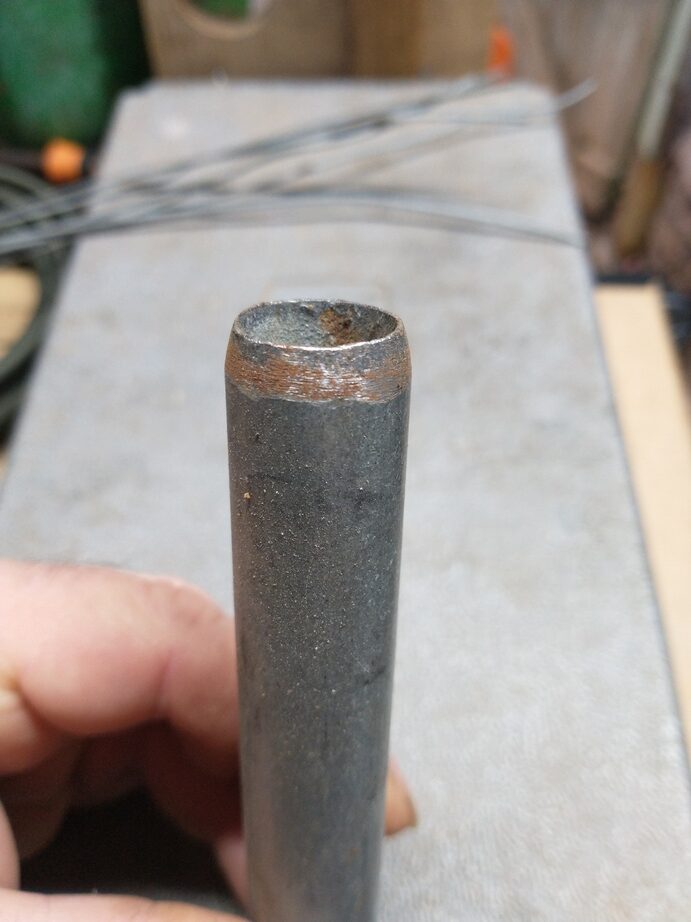
At which point my father-in-law pointed out that he had a proper hole punch that should do the job:
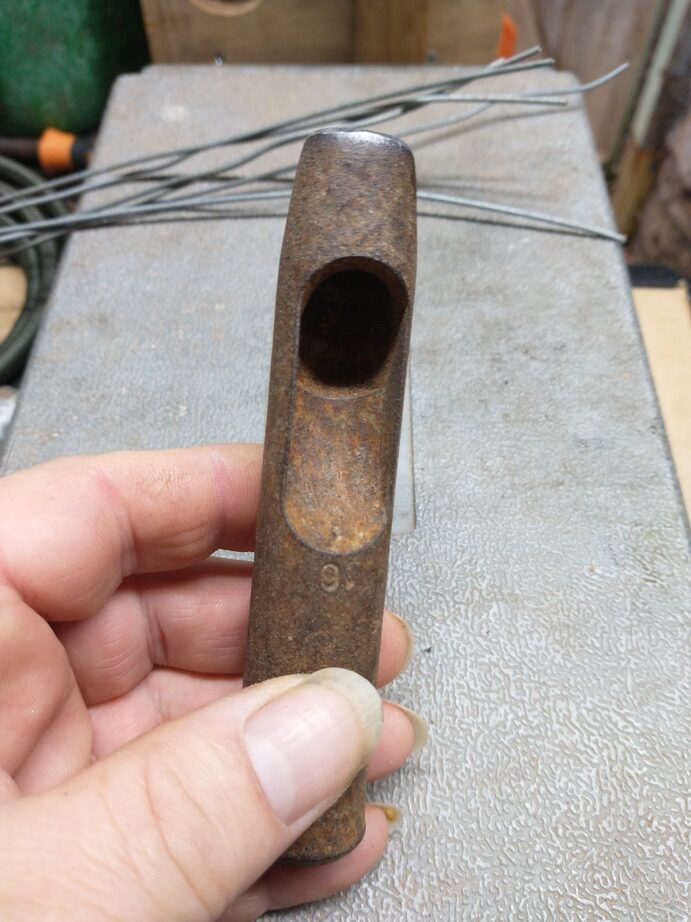
I have no idea what the “6” (or “9”) legend means. Perhaps it’s some sort of standard for hole punch sizes. Anyhow, it’s about 5/8″ or 16mm. He also directed me to an “anvil” that he’d cast from lead (from when he was into sea fishing and used a lot of lead for weights)
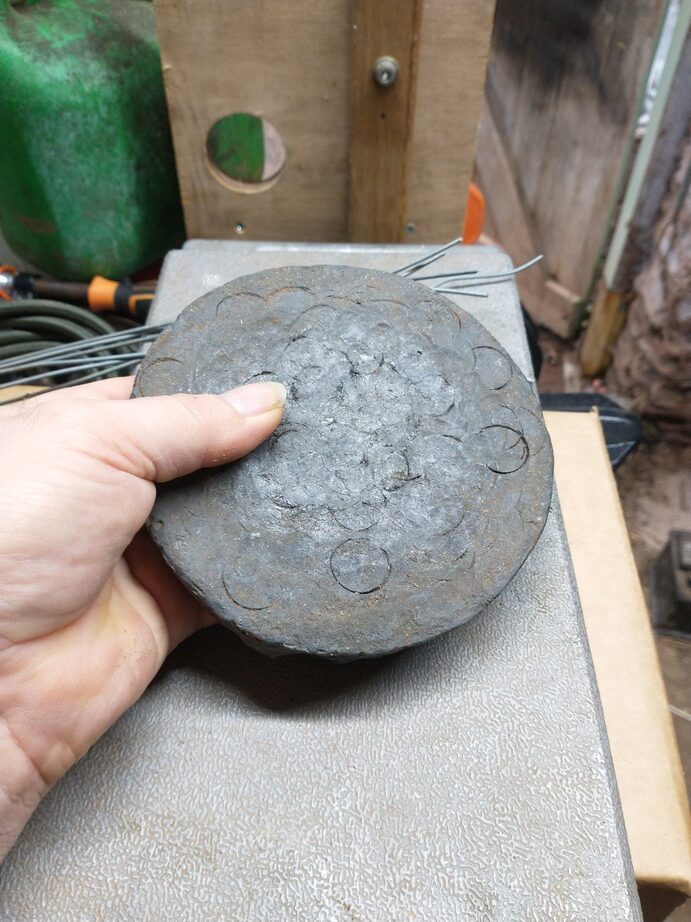
I imagine a lump of hardwood might make an adequate alternative. I tried softwood and the plastic of the tray just deformed into it.
So, whenever I need a tray for sowing some seeds, I take a few more trays than I need (there’s no denying that it’s a very tedious job, so it’s nice to just get ahead of the game gradually rather than having to do twenty trays all at once) and cut a hole through the bottom of each cell. The compost stays inside just fine if it’s pressed down well, and removing the plug by pushing it out with a finger means the walls of the cells don’t get damaged so the tray can be used repeatedly.
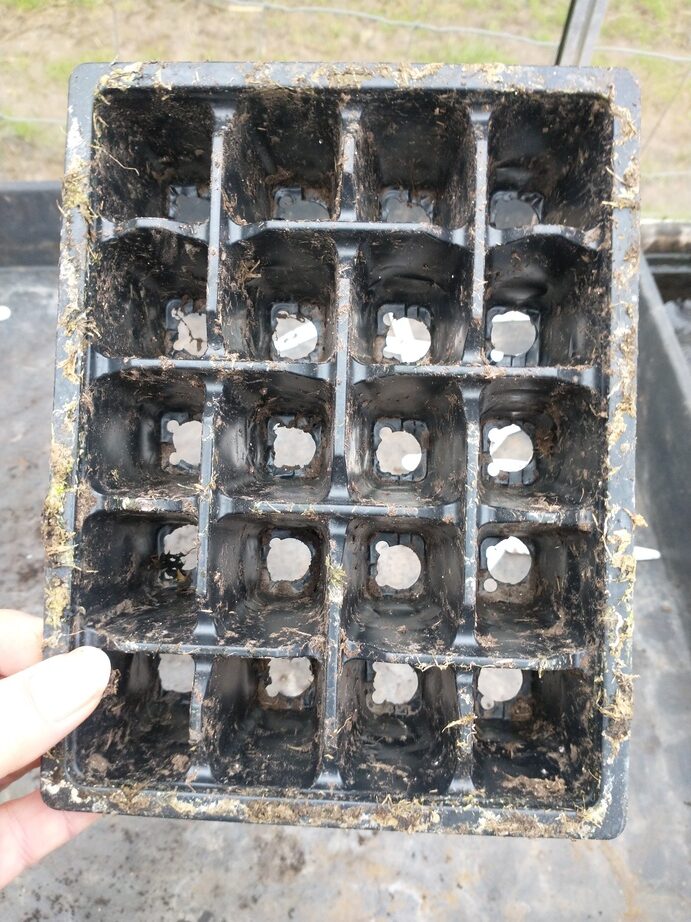
I still don’t like that I’m using plastic, but at least it’s now plastic that will last a few years rather than being single-use.
And yes, it may well cost more in the long run than buying Charles’ trays (because they’re not as robust), but it’s what I can afford now. I’m reminded of a passage in Terry Pratchett’s Men At Arms:
The reason that the rich were so rich, Vimes reasoned, was because they managed to spend less money. Take boots, for example. … A man who could afford fifty dollars had a pair of boots that’d still be keeping his feet dry in ten years’ time, while a poor man who could only afford cheap boots would have spent a hundred dollars on boots in the same time and would still have wet feet.
